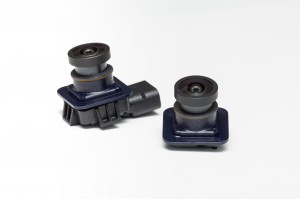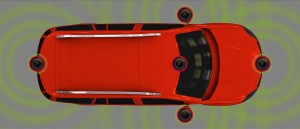Magna, the third-largest automotive parts supplier in the world, is focused on delivering game-changing innovations that lead to market gains for its customers; innovations that meet changing consumer needs and the ongoing challenges of the global automotive industry.
One product area that Magna is a pioneer in is electronics, specifically camera-based technology. As the automobile continues to evolve and new technologies are introduced, electronics systems are becoming more integral to driving performance and experience. The company is well-positioned to take advantage of this trend by supporting next-generation vehicles with innovative products such as EYERIS™ rearview camera systems.

 Magna’s development of cameras dates back to the 1980s as engineers looked at ways to replace vehicle mirrors with cameras. Magna Electronics operating unit was officially formed in 2006 to focus on camera technology development, and General Motors’ Hummer H2 was one of the earliest vehicles to feature a Magna camera. Today, Magna has become the market leader in camera-based driver assistance technologies and recently produced its ten-millionth rearview camera at its Holly, Michigan, USA facility.
Magna’s development of cameras dates back to the 1980s as engineers looked at ways to replace vehicle mirrors with cameras. Magna Electronics operating unit was officially formed in 2006 to focus on camera technology development, and General Motors’ Hummer H2 was one of the earliest vehicles to feature a Magna camera. Today, Magna has become the market leader in camera-based driver assistance technologies and recently produced its ten-millionth rearview camera at its Holly, Michigan, USA facility.
The EYERIS™ product line was designed with the goal of perfecting performance and improving vehicle safety. Drivers around the world face unique situations – smaller congested streets, increased pedestrian obstacles and crowded highways. EYERIS™ cameras present an unobstructed view in parking situations and provide driving assistance in critical conditions, helping drivers have the best visibility possible around the vehicle. Magna’s ability to customize camera systems to different vehicle segments gives them the flexibility to meet customer needs anywhere in the world.
The rearview cameras offer wide angle views and sharp MegaPixel resolution so that the driver can clearly see the parking space or any obstruction behind the vehicle. Magna is focused on delivering cost effective cameras that provide high-quality images similar to consumer cameras that meet drivers’ expectations.
In many parts of the world, legislation is pushing for more camera technology. In the United States, for example, all vehicles weighing less than 10,000 pounds manufactured on or after May 1, 2018 must have electronic rear visibility technology. In other countries, market acceptance of new camera technologies is driving demand. In Japan, for instance, rearview cameras are becoming a standard product on vehicles. Simply put, more and more automakers around the world are looking at ways to incorporate all types of camera technology, from front facing imagers to side blind-spot detection systems, into future vehicle launches.
Automakers are also exploring possibilities for self-driving vehicles, and Magna’s camera technologies are essential building blocks towards fully autonomous vehicles. Magna’s object detection and adaptive cruise control technology warns drivers and automatically slows down vehicles to help prevent accidents. The camera sensors recognise and respond to the vehicle speeds of other cars and traffic patterns, and are adaptive to urban or highway driving. Self-driving vehicles will require tremendous amounts of advanced infrastructure and smart technologies such as accident avoidance systems, and adaptive camera sensors like Magna’s will be necessary for autonomous vehicles to succeed in the long term.
Magna’s large global footprint, consisting of more than 300 manufacturing, sales, and engineering facilities in 29 countries around the world, positions the company to optimally support its global customers. In India specifically, Magna has 13 locations supporting both local and global automakers.
Magna’s camera systems help create a focused driving experience that improves vehicle safety, not only for drivers but for occupants and pedestrians as well. As legislation and consumer trends continue to change, Magna is well-positioned to capitalize on it by delivering innovative products to the global market place. ACI
Compiled by Krishna Kumar






Leave a Reply